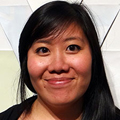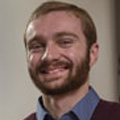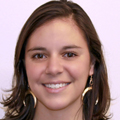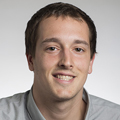Personal Mention
 Interdisciplinary, project-based artist Imin Yeh has joined the School of Art as a faculty member in 2-D media. Yeh works in sculpture, installation, participatory events and print, with paper as the most recurrent element. The projects use repetitive handcraft and mimicry as a strategy for exploring the issues around the unseen labor and production that lies behind our many unconsidered everyday objects. Yeh comes to Pittsburgh from California, where she was an adjunct professor and teaching artist at Stanford University, San Jose State University and California College for the Arts. Find out more.
Interdisciplinary, project-based artist Imin Yeh has joined the School of Art as a faculty member in 2-D media. Yeh works in sculpture, installation, participatory events and print, with paper as the most recurrent element. The projects use repetitive handcraft and mimicry as a strategy for exploring the issues around the unseen labor and production that lies behind our many unconsidered everyday objects. Yeh comes to Pittsburgh from California, where she was an adjunct professor and teaching artist at Stanford University, San Jose State University and California College for the Arts. Find out more.
 Sophomore Ian Asenjo has received a Critical Language Scholarship (CLS) from the U.S. Department of State. Critical languages, including Arabic, Chinese and Punjabi, can be difficult to learn because they are radically different from English in grammatical structure and other features. As a result, the demand for proficiency in these languages outpaces the supply of fluent speakers. A global studies major with an additional major in ethics, history and public policy, Asenjo was drawn to the CLS program because of its strong reputation for intensive language learning. He will be traveling to Chandigarh, India, this summer, where he hopes to gain proficiency in Punjabi and explore his passion for Bhangra — a folk dance with roots in the region. Though Asenjo has not yet begun Punjabi language training, he attends weekly services at a Sikh temple (“Gurdwara”) in Monroeville as a way to learn more about the language and culture. Find out more.
Sophomore Ian Asenjo has received a Critical Language Scholarship (CLS) from the U.S. Department of State. Critical languages, including Arabic, Chinese and Punjabi, can be difficult to learn because they are radically different from English in grammatical structure and other features. As a result, the demand for proficiency in these languages outpaces the supply of fluent speakers. A global studies major with an additional major in ethics, history and public policy, Asenjo was drawn to the CLS program because of its strong reputation for intensive language learning. He will be traveling to Chandigarh, India, this summer, where he hopes to gain proficiency in Punjabi and explore his passion for Bhangra — a folk dance with roots in the region. Though Asenjo has not yet begun Punjabi language training, he attends weekly services at a Sikh temple (“Gurdwara”) in Monroeville as a way to learn more about the language and culture. Find out more.
 Maria Cuellar, a doctoral student in statistics and public policy, contributed to an op-ed that recently appeared in the Pittsburgh Post-Gazette. In “The Next Page: Four experts explain why forensic analysis of crime scenes is not as reliable as you might think,” Cuellar and her co-authors argue that many forensic science methods are not sufficiently tested. The authors cite examples from the case of Steven Avery, the subject of the Netflix documentary series “Making a Murderer.” According to the authors, “When the liberty of a human being is on the line, the scientific evidence on which we rely must be as valid and unbiased as possible.” Read the op-ed.
Maria Cuellar, a doctoral student in statistics and public policy, contributed to an op-ed that recently appeared in the Pittsburgh Post-Gazette. In “The Next Page: Four experts explain why forensic analysis of crime scenes is not as reliable as you might think,” Cuellar and her co-authors argue that many forensic science methods are not sufficiently tested. The authors cite examples from the case of Steven Avery, the subject of the Netflix documentary series “Making a Murderer.” According to the authors, “When the liberty of a human being is on the line, the scientific evidence on which we rely must be as valid and unbiased as possible.” Read the op-ed.

 Two Ph.D. students in statistics, Shannon Gallagher (far left) and Lee Richardson, finished first place in the MIDAS MISSION Public Health Hackathon. The purpose of the competition was for teams to develop visualization software to improve public health. In their research, both Gallagher and Richardson focus on modeling the spread of infectious diseases worldwide. For the competition, they developed interactive visualization tools to show disease incidence in specific U.S. regions. The team — the only statisticians who participated in the competition — also developed a data download tool to allow other researchers to explore the data. View the team’s submission.
Two Ph.D. students in statistics, Shannon Gallagher (far left) and Lee Richardson, finished first place in the MIDAS MISSION Public Health Hackathon. The purpose of the competition was for teams to develop visualization software to improve public health. In their research, both Gallagher and Richardson focus on modeling the spread of infectious diseases worldwide. For the competition, they developed interactive visualization tools to show disease incidence in specific U.S. regions. The team — the only statisticians who participated in the competition — also developed a data download tool to allow other researchers to explore the data. View the team’s submission.
